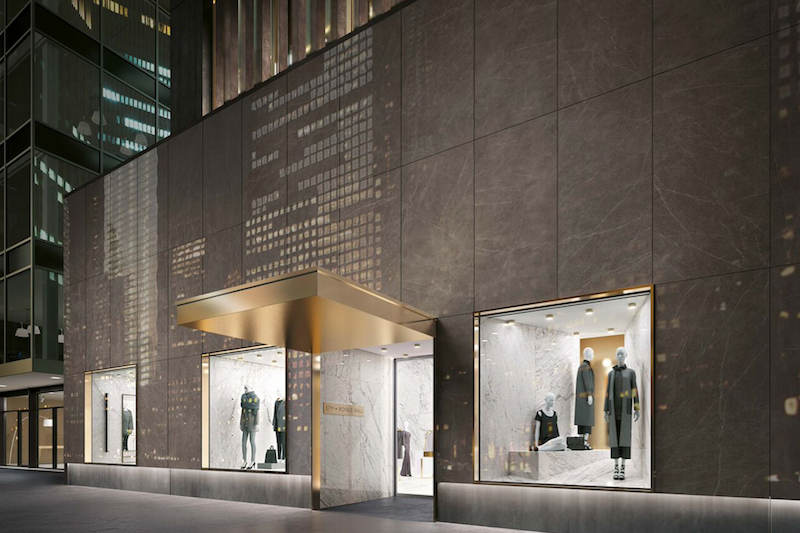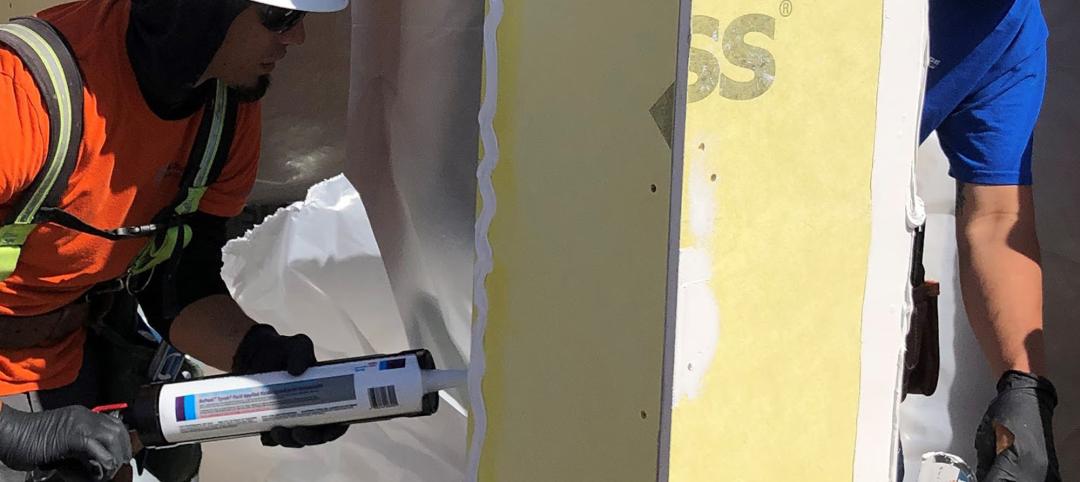Cersaie, the world’s largest exhibition of ceramic tile and bathroom furnishings, was held in Bologna, Italy this past September and, now, Ceramics of Italy has taken what they saw on display at the show and created a list of the top 10 tile trends to watch as we head into 2017. The diverse list includes a multitude of colors, textures, and finishes. Scroll down to view the complete list.
Against the grain
 Pictured: Pastorelli - Komi
Pictured: Pastorelli - Komi
Wood continues to serve as a major muse for the tile industry, with companies adding their own twist and utilizing new production methods to create a whole new typology of floor and wall covering. Some are inspired by exotic woods, offering a beautiful, sustainable alternative to rare hardwoods such as Kauri while others recreate the warmth and imperfections of wood in 2cm outdoor pavers, large thin slabs, kaleidoscopic patterns and three-dimensional tiles that are virtually impossible to achieve with real timber.
Bits & Pieces
 Pictured: Fap - Maku
Pictured: Fap - Maku
Many companies are introducing collections characterized by a random assortment of fragmented pieces, lending an eclectic and playful visual narrative to the surface. Some of the designs are inspired by natural stone with a conglomerate look such as Ceppo di Gré while others convey a sense of manual processing such as Venetian terrazzo and irregular stone mosaics.
Black & Blue
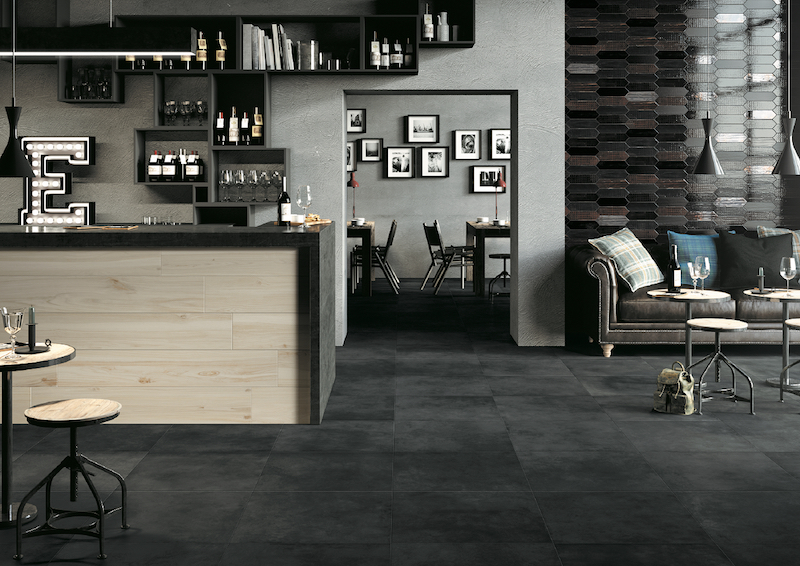 PIctured: Mirage - Reve
PIctured: Mirage - Reve
While black is always in style, intense blacks with matte finishes are making a strong statement this year. Meanwhile, blue – which has been popping up everywhere this year from fall fashion shows to hair color – is taking the tile industry by storm, expanding beyond last year’s marine palette to include dusty, vibrant, and sophisticated hues of blue.
Gritty Chic
 Pictured: Cedit - Archeologie
Pictured: Cedit - Archeologie
Adding an edge to interiors, tile companies continue to experiment with plaster, concrete, metal and resin. Some designs are elegant interpretations of industrial surfaces, offering a kind of raw sophistication, while others are intentionally corroded and weathered, conjuring a romantic notion of the passage of time.
Mega Marble
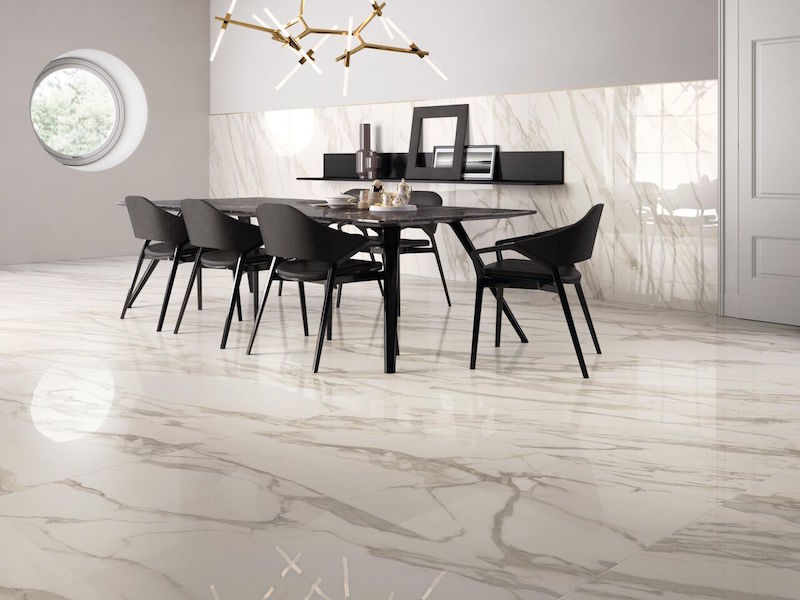 Pictured: Supergres - Purity
Pictured: Supergres - Purity
For designers who love the brilliant look of marble but loathe the headaches associated with it, porcelain tile is a no-brainer. Digital printing has become so advanced that it’s hard to tell whether the material is calacatta or ceramic, even after touching the surface. Being stain, scratch and chemical resistant, it gives clients freedom from fear (especially of red wine) and provides a low maintenance and low cost alternative to the precious material. Companies are producing these wunder objekts in sizes up to 5.25’ x 10.5’ and thicknesses ranging from a typical tile thickness of 10mm for heavy traffic floors to super thin ceramics that can be used to cover doors, furnishings and walls.
Metallics
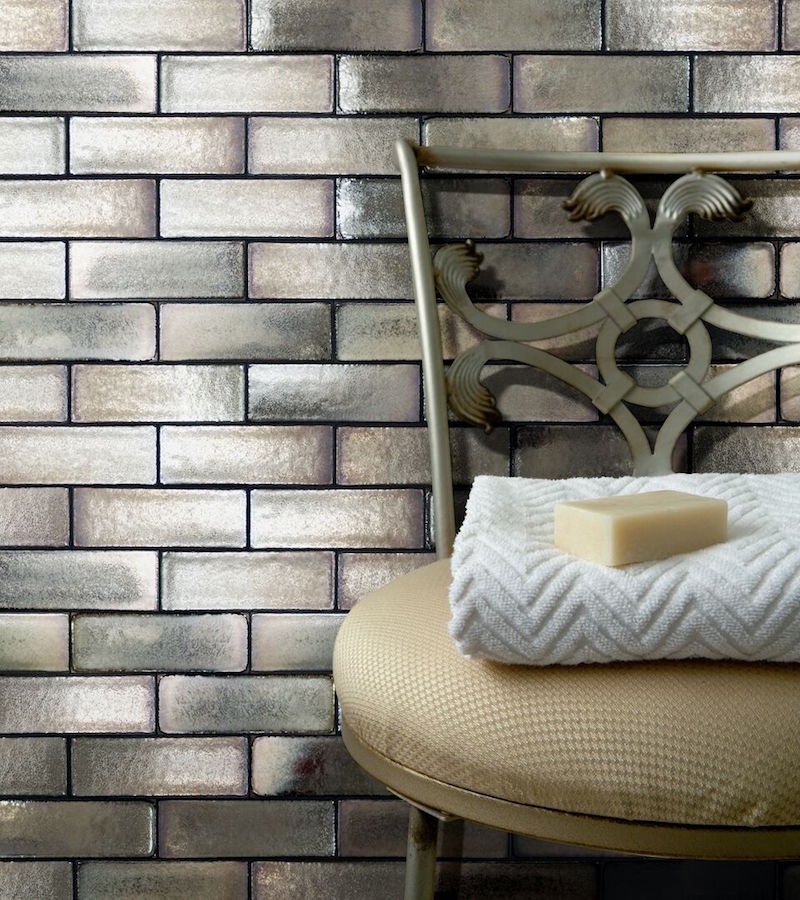 Pictured: Unica - Brique
Pictured: Unica - Brique
With metallics’ growing popularity, beyond product design and into the built environment, it's unsurprising that tile companies are adding more metallics to the mix than ever before. Bronze, platinum and gold are the key players, often acting as inserts or decorative accents, adding a bit of glamour to collections often inspired by natural materials.
Retro Revival
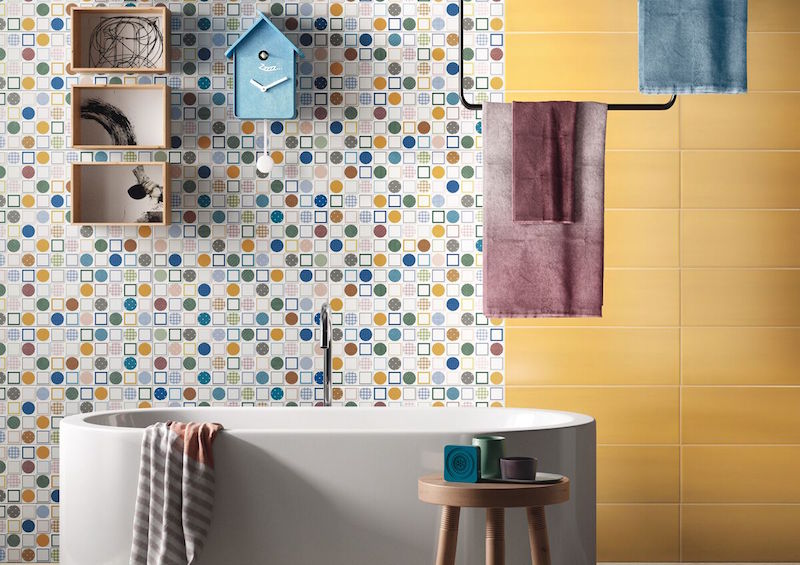 Pictured: Imola - Play
Pictured: Imola - Play
Great designers learn from history, borrowing elements from the past and infusing them with contemporary ideas to create something completely new. Retro is a trend that has been percolating for years, especially with the graphic appeal of cementine and maiolica, but now other historical movements have joined the fold, from the elegance of art deco to the bold shapes and hues of Memphis.
Rustic Modern
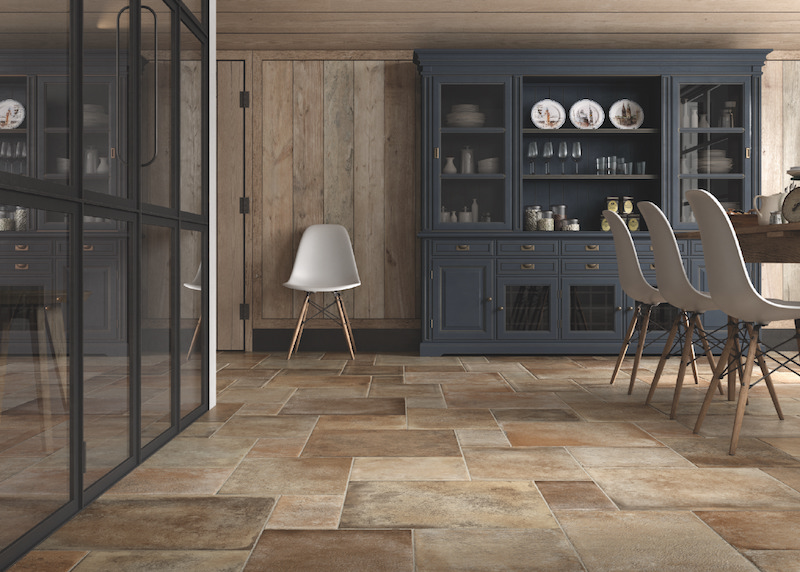 Pictured: Manifattura del Duca - Cotto Med
Pictured: Manifattura del Duca - Cotto Med
Adding a new twist to country style, wood, stone, brick and cotto are invigorated by modern laying schemes, hues and patterns. Antique stone with metallic accents, terracotta in quatrefoil shapes, and geometric patterns overlaid onto distressed wood planks are just a few of the ways tile companies are blending farmhouse charm with modern elegance.
Seamless
 Pictured: Bardelli - Eve
Pictured: Bardelli - Eve
With decorative surfaces undergoing a renaissance, tile offers the perfect solution to create a contemporary fresco, combining the tactile appeal of wallpaper with the durability of ceramic. From large, thin porcelain tile panels and mesh-mounted mosaics to patterns that traverse a single tile's dimensions, Italian manufacturers are giving designers the tools to create a beautifully seamless surface.
Warp & Weft
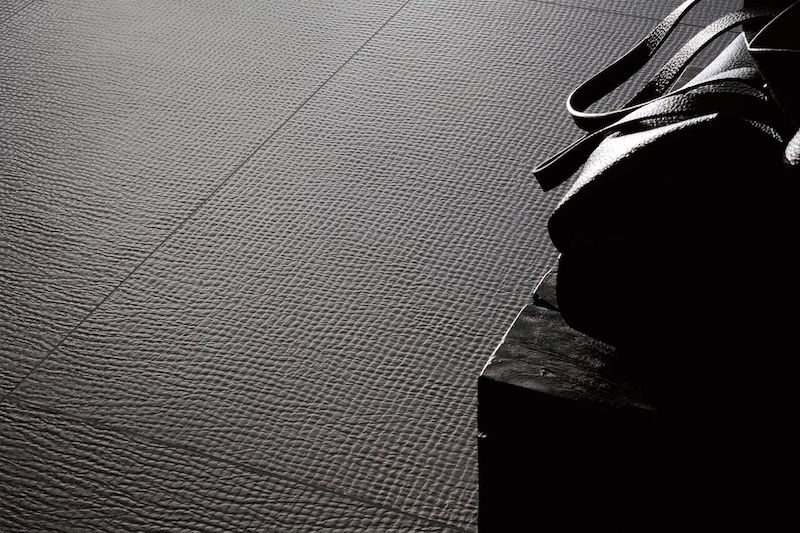 Pictured: Coem - Patchwork
Pictured: Coem - Patchwork
Texture is the defining character of this year’s tile collections, which complements the many new textile inspired lines. Designs range from lace, macramé, linen and madras to masculine suiting fabrics, leather, tweed and tartan. Whether woven, knitted, knotted, or layered, the designs add another tactile element to the hard surface.
Related Stories
AEC Innovators | Mar 3, 2023
Meet BD+C's 2023 AEC Innovators
More than ever, AEC firms and their suppliers are wedding innovation with corporate responsibility. How they are addressing climate change usually gets the headlines. But as the following articles in our AEC Innovators package chronicle, companies are attempting to make an impact as well on the integrity of their supply chains, the reduction of construction waste, and answering calls for more affordable housing and homeless shelters. As often as not, these companies are partnering with municipalities and nonprofit interest groups to help guide their production.
Codes | Mar 2, 2023
Biden Administration’s proposed building materials rules increase domestic requirements
The Biden Administration’s proposal on building materials rules used on federal construction and federally funded state and local buildings would significantly boost the made-in-America mandate. In the past, products could qualify as domestically made if at least 55% of the value of their components were from the U.S.
AEC Innovators | Mar 2, 2023
Turner Construction extends its ESG commitment to thwarting forced labor in its supply chain
Turner Construction joins a growing AEC industry movement, inspired by the Design for Freedom initiative, to eliminate forced labor and child labor from the production and distribution of building products.
AEC Innovators | Feb 28, 2023
Meet the 'urban miner' who is rethinking how we deconstruct and reuse buildings
New Horizon Urban Mining, a demolition firm in the Netherlands, has hitched its business model to construction materials recycling. It's plan: deconstruct buildings and infrastructure and sell the building products for reuse in new construction. New Horizon and its Founder Michel Baars have been named 2023 AEC Innovators by Building Design+Construction editors.
Codes and Standards | Feb 8, 2023
GSA releases draft of federal low embodied carbon material standards
The General Services Administration recently released a document that outlines standards for low embodied carbon materials and products to be used on federal construction projects.
Concrete | Jan 24, 2023
Researchers investigate ancient Roman concrete to make durable, lower carbon mortar
Researchers have turned to an ancient Roman concrete recipe to develop more durable concrete that lasts for centuries and can potentially reduce the carbon impact of the built environment.
Standards | Jan 19, 2023
Fenestration Alliance updates liquid applied flashing standard
The Fenestration and Glazing Industry Alliance (FGIA) published an update to its Liquid Applied Flashing Standard. The document contains minimum performance requirements for liquid applied flashing used to provide water-resistive seals around exterior wall openings in buildings.
Sponsored | Resiliency | Dec 14, 2022
Flood protection: What building owners need to know to protect their properties
This course from Walter P Moore examines numerous flood protection approaches and building owner needs before delving into the flood protection process. Determining the flood resilience of a property can provide a good understanding of risk associated costs.
K-12 Schools | Nov 30, 2022
School districts are prioritizing federal funds for air filtration, HVAC upgrades
U.S. school districts are widely planning to use funds from last year’s American Rescue Plan (ARP) to upgrade or improve air filtration and heating/cooling systems, according to a report from the Center for Green Schools at the U.S. Green Building Council. The report, “School Facilities Funding in the Pandemic,” says air filtration and HVAC upgrades are the top facility improvement choice for the 5,004 school districts included in the analysis.
University Buildings | Nov 13, 2022
University of Washington opens mass timber business school building
Founders Hall at the University of Washington Foster School of Business, the first mass timber building at Seattle campus of Univ. of Washington, was recently completed. The 84,800-sf building creates a new hub for community, entrepreneurship, and innovation, according the project’s design architect LMN Architects.


